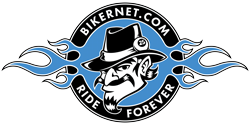Motorcycle Awareness Month 2023
May is Motorcycle Safety Awareness Month, and warmer weather means more motorcycles on the roads. We want to Remind Motorists to Share the Road and Be Alert. Always check your blind spots. Motorcycles are smaller than other vehicles and can be even more difficult to spot while merging or changing lanes. Be extra cautious when […]
Motorcycle Awareness Month 2023 Read More »
